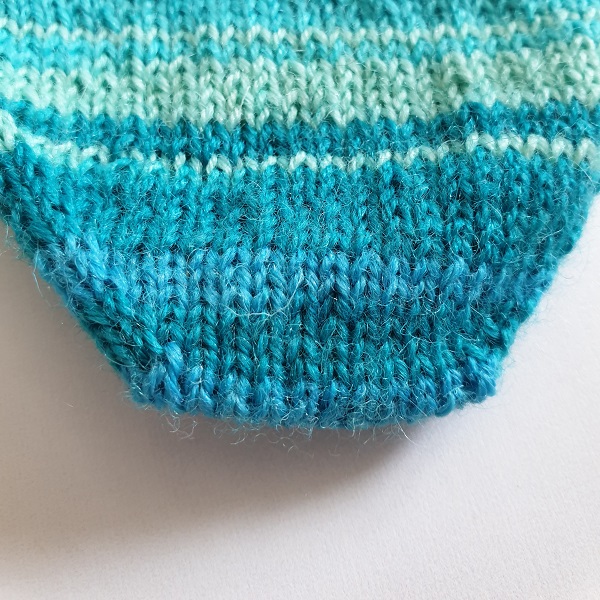I'm a huge fan of knitting in the round -socks, sleeves and pretty much anything I can do on circular needles I will. I tend to mainly use magic loop but for travel knitting where elbow space is limited or where I need to be able to drop my knitting at a moment's notice (and not miss my stop) I tend to use tiny circular needles.
I generally use the 23cm (9”) diameter ones - these particular ones are Addi sock rockets but other brands also do them.
I often get asked how I knit with them and so I thought I would note down a few tips and pointers to help get you started.
The first thing to say is that they aren't everyone's cup of tea. Some people love them, some hate them and that's entirely fine. We all have our preferred ways of knitting.
Give it time - it will feel strange at first and that’s OK. Give yourself time to adjust to the new sensations, how they feel in your hands.
Relax your grip - I tend to hold my needles quite tightly anyway but I found that with tiny circulars it really does help to loosen the death grip a bit. Not only will your fingers cramp less but it will feel a lot more comfortable
Try to use the tips of your fingers - this can be tricky if your knitting style means that you tend to rest the needles on your palms usually. Keep movements small and light - again trying to keep a light hold on the needle tips as you guide the yarn really helps.
I’ve heard it said that it’s easier to master tiny circular needles if you are a “thrower” rather than a “picker/Continental style”. I’m not sure if there’s any truth to that as I can knit both ways and both seem equally comfortable.
One thing I would say is that unlike with magic loop or DPNs, there is no natural pause whilst you are knitting. There is no point in proceedings where you have to stop to rearrange your stitches or needles. That’s great from the point of view of efficiency but it does mean that you need to make a conscious effort to stop and stretch your hand muscles from time to time.
Many people complain of hand cramps when using small circulars but I find that a short stretch every 10 minutes or so is really helpful. The Loopy Ewe published a short series of ‘Exercises for Knitters’ a while ago which is really useful if you are interested.
Anyway, I hope these few pointers help you to overcome your fear of the tiny circs and give them a go - do let me know if you do try them. I’d love to know what you think.
PIN FOR LATER












